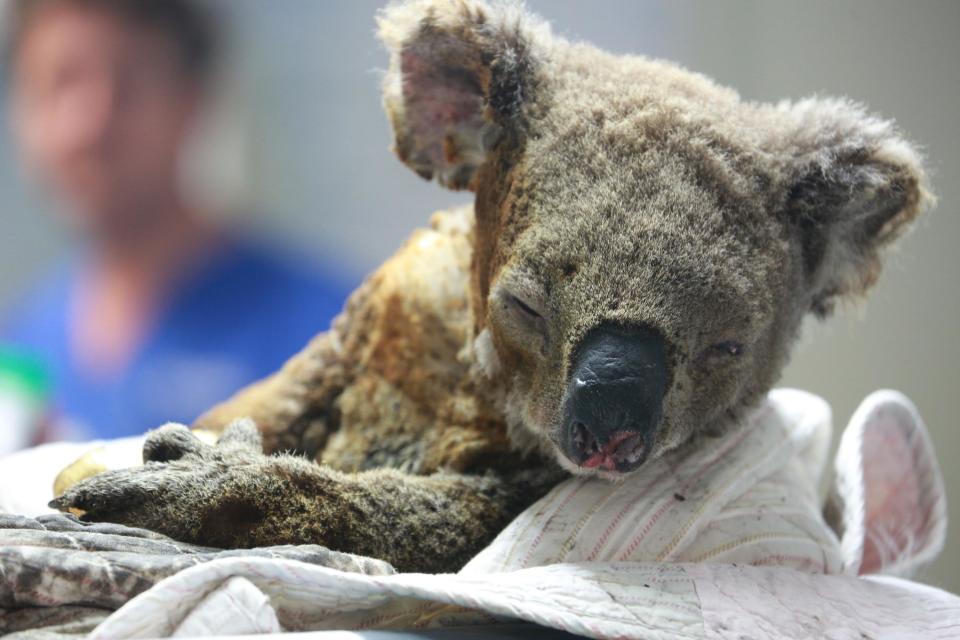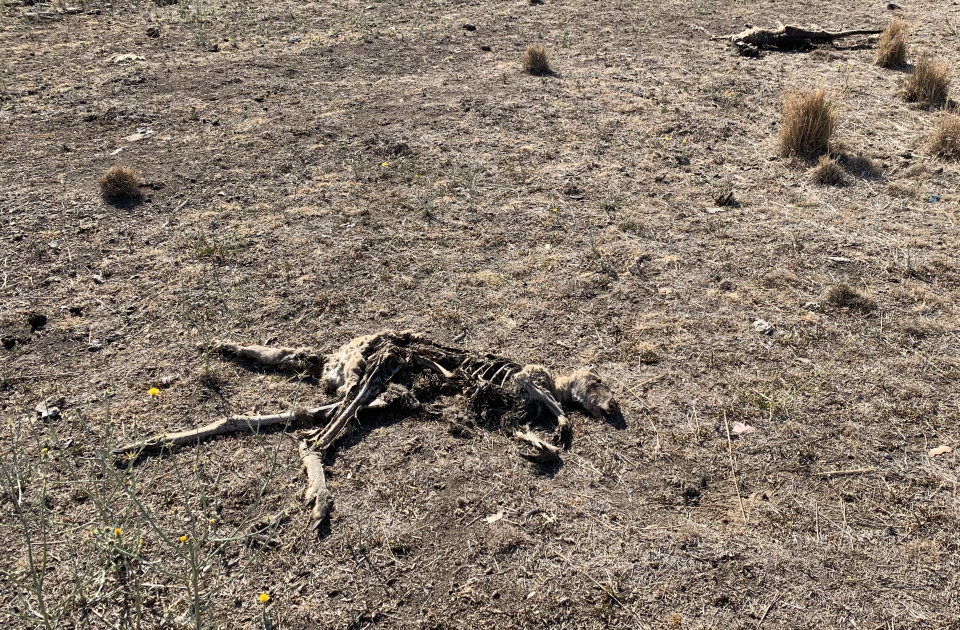How these orange dots on trees are saving 'desperate' wildlife in bushfires
Orange dots are being spray painted in forests to help drought and bushfire-affected native animals.
Ordinarily, Australians are discouraged from feeding wildlife, but severe weather conditions have left many mammals, reptiles and birds in desperate need of human help.
When people see an orange dot, they are encouraged to fill the water station at the bottom of the tree or leave food in the hanging baskets provided by volunteers.
NSW Central Coast woman Lisa Diggins, 41, started the grassroots initiative to empower communities to help thirsty and malnourished animals.
Now she says she’s seeing the idea take off across Australia.

“It’s just an easy locator for people to find our feed stations,” she told Yahoo News Australia.
“Generally we would just like people to put out some pellet food, or vegetable scraps, or some water.
“Animals are desperate and suffering, so every little bit of water helps.”
As she spoke with Yahoo News Australia, Ms Diggins was travelling down from setting up a feeding station in Bucketty, on the NSW Central Coast, where last Tuesday a farmer reported finding a koala who had died of dehydration.
With waterholes drying up, animals across many areas of Australia are struggling to find water.

“It is quite eye-opening – it’s a mass devastation,” she said.
“People can just get this going in their backyards in suburbia, it doesn’t have to be in bushland.
“Where we’ve put the stations, there has been scratchings on the ground from wallabies and wombats, and there have been lots of birds too.
“I’m really proud of the way things are coming along.”
As animals like koalas venture down from trees in search of water, they are increasingly coming into contact with humans.

Reports from wildlife carers suggest many are being run over by cars, attack by cats and dogs, or being shot on farms.
Volunteers hope the orange dot movement will provide clear direction to help wildlife thrive again.
‘It’s really dangerous at the moment.’
Until the bushfire season began, Ms Diggins had never worked with wildlife before, so she is learning as she goes.
While the initiative has generally been hailed as a great way to help wildlife, there has been some concern online over the dots.

Emergency service crews regularly use spray painted symbols on trees to highlight dangerous trees, marking them with an X, K or yellow dot.
Many forests that have been devastated by bushfires remain dangerous and falling trees remain a threat to walkers.
'Cooking alive': The desperate fight to save Australian wildlife from collapse
'You don’t sweat when terrified': Inside the evacuation of Aussie zoo threatened by bushfires
Revealed: The biggest challenge to saving fire-ravaged koala population
'Absolute tragedy': Koala numbers decimated after bushfires destroy key habitats
Former roo shooter 'paying her penance' by caring for joeys dying in bushfires
Ms Diggins explained she had let the Rural Fire Service in her area know about the work she was doing and they had been supportive.
She is working to get her work sanctioned by the authorities and encourages people considering entering fire-affected areas to consult with their local fire authorities first.
“With the trees coming down it’s really dangerous at the moment,” she said.
“People need to be smart about the areas they are entering and I just hope they’ll use common sense.”
Do you have a story tip? Email: newsroomau@yahoonews.com.
You can also follow us on Facebook, Instagram and Twitter and download the Yahoo News app from the App Store or Google Play.




